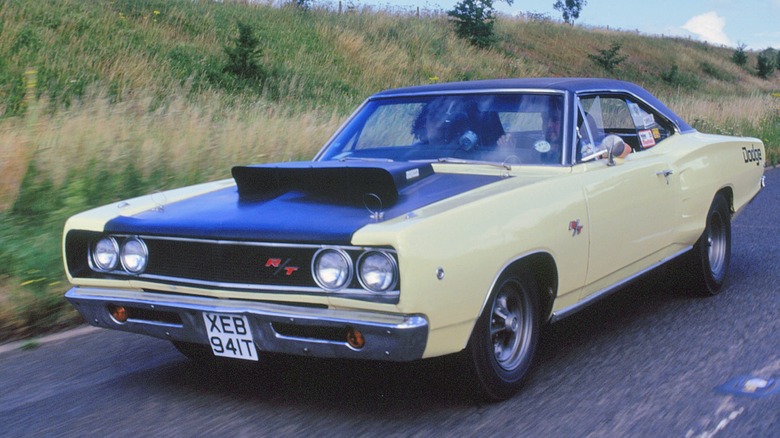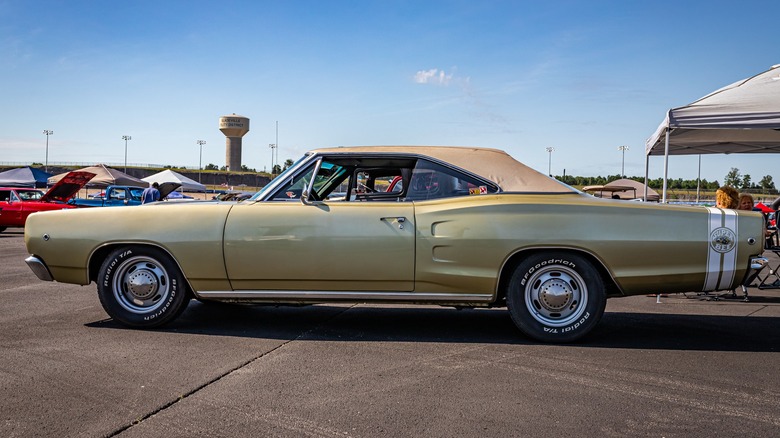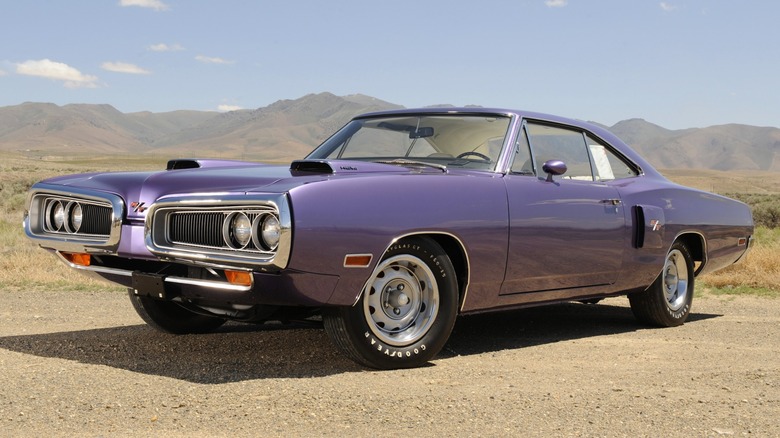Everything Mopar Fans Should Know About The Dodge Coronet
Dodge used the Coronet nameplate on two completely different car models over a span of four decades and multiple generations of each. The first Dodge Coronet rolled off the assembly line for the 1949 model year. As Dodge's first new model following the end of World War II, the original Coronet enjoyed four generations before Dodge briefly retired the nameplate after 1959.
The first four Coronet generations saw many changes in the ten-year production run. The Coronet featured several body types, including two-door offerings such as coupes, hardtops, and station wagons, as well as four-door sedans and station wagons.
The original Coronet powerplant, a single-barrel-carbureted, 230 cubic-inch (3.8-liter) flat-head six-cylinder, provided 103 horsepower, capable of a 90 mph top speed. Second-generation Coronets gained a Hemi engine option with the 241 cubic-inch "Red Ram," an engine design that set over 100 Bonneville Salt Flats speed records at the time. The pinnacle of early Coronet powertrain offerings came from the 340-horsepower 354-cubic-inch V8 featuring a 10:1 compression ratio and a pair of four-barrel carburetors.
In the Coronet's final iteration before its brief retirement, Dodge offered a special version with a name destined to return: the 1959 Silver Challenger. Dodge offered the Silver Challenger strictly as a silver two-door but with a choice between a six-cylinder or V8 powertrain.
The Dodge Coronet provided the foundation for a muscle car legend
Dodge resumed use of the Coronet nameplate in 1965 after a six-year hiatus following what Hemmings calls "a historic blunder" by Dodge. Dodge's "blunder," downsizing its cars ahead of the competition, helped the automaker capitalize on the newly forming intermediate-sized car market. The fifth-generation Coronet would go on to become the basis for the Dodge Super Bee, one of the most iconic Mopars ever built.
Dodge offered the 1965 Coronet in four distinct levels: the base Coronet, Coronet Deluxe, Coronet 440, and Coronet 500. The lowest level Coronet only offered two- and four-door sedan options. The Deluxe version included a station wagon model in addition to the two sedan offerings. The Coronet 440 offered the most body style options, with two-door hardtop, two-door convertible, four-door sedan, and four-door six- and nine-passenger station wagon models available. The top-trimmed Coronet 500 allowed a choice of hardtop or convertible two-door body styles.
The 145-horsepower 225-cubic-inch Slant Six was the base engine for most of the Dodge Coronet lineup. Only Coronet 440 nine-passenger station wagons and Coronet 500s featured the 180-horsepower 273-cubic-inch V8 as the base engine.
Throughout the 1960s, Dodge offered multiple engine options for the Coronet. Small-block V8 options included displacements ranging from 273 to 361 cubic inches with horsepower ratings from 230 to 265. More powerful big block engine options included those with 383, 426, and 440 cubic inch displacements, the most potent option being the 425-horsepower 426 Hemi.
The end of the Dodge Coronet's performance era
Dodge deleted the two-door body style for the Coronet's sixth generation, 1971 to 1974, offering it only as a four-door sedan or station wagon. While the 440 Magnum engine option continued as an optional powerplant, government mandates resulted in reduced horsepower. With its most popular model years behind it, sales numbers fell to nearly half of what they were in the late 1960s despite suspension advancements offering a superior ride and quieter interior.
Dodge brought back the two-door Coronet model for the seventh generation in 1975 but discontinued it for the final model year in 1976. The 440 big block remained on the books as the police cruiser powerplant.
The Coronet nameplate retired again after 1976 in the United States, with Dodge renaming it Monaco in 1977. The existing full-size Monaco took the Royal Monaco nameplate to avoid confusion between the two models. However, in Columbia, the Dodge Diplomat used the Coronet nameplate for a time in the 1980s.


